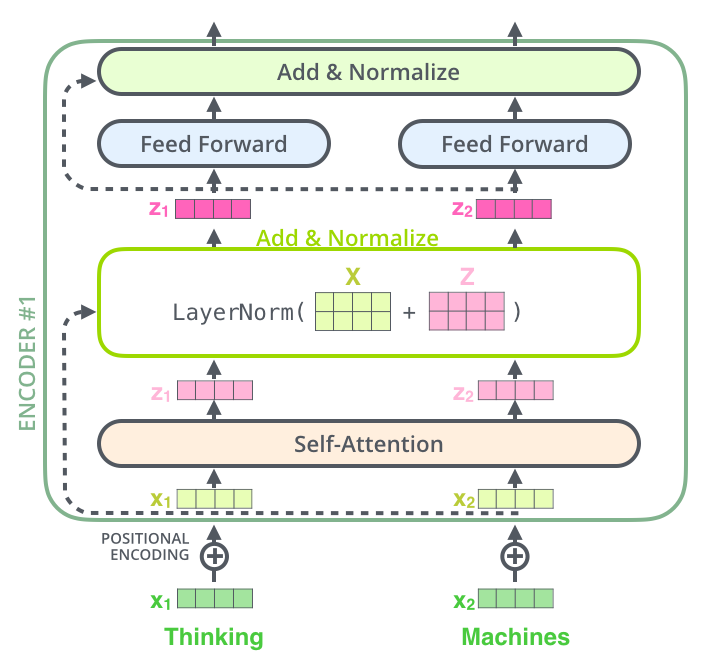| author: | nilesh2797 |
| score: | 8 / 10 |
What is the core idea?
The authors study self attention based architectures and realize following key properties: 1) Self attention layers have strong bias towards “token uniformity” and it gets exponentially worse with depth 2) Skip-connection and MLP counteract the “token uniformity” bias and hence prevent model degeneration
Context
- Attention-based architectures have become ubiquitous in ML yet understanding of the reasons for their effectiveness is limited.
- Transformer architectures consists of multiple transformer layers stacked on each other, typical transformer layer is as following (Source):

Self-Attention Networks (SAN) path decomposition
The paper starts by studying self-attention networks (SANs) built exclusively out of multi-head self-attention layers.
They show that the ouput of SAN decomposes into the combination of simpler single-head networks, where each single-head corresponds to a unique path across H heads and L layers


Exponential degeneration of SANs
The output of SAN loses rank (moves towards uniform token representation) exponentially with depth

Skip connections and MLP help in avoiding rank collapse

-
Adding Skip connections leads to some paths which essentially have low depth and hence rank collapse is mitigated
-
MLP increases the lipschitz constants of the function which slows down the collapse rate with depth
Path effectiveness

Analysis of SAN with skip connections indicates that path expressivity decreases with path length, to test this hypothesis, authors isolate paths of different lengths and evaluate their predictive power
Transformer behaves like an ensemble of shallow networks, there is underutilized capacity in long paths
TL;DR
- Deep self attention layers tend to collapse token outputs towards degenerate representation
- Skip-connection and MLP help in avoiding such collapse
- Transformers behaves like an ensemble of shallow networks